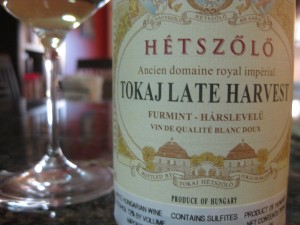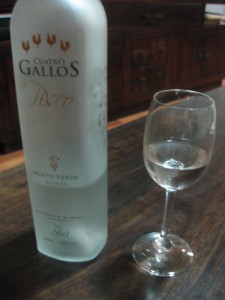 Mocked Madeira
Mocked Madeira
Madeira is a little known grape that still finds ways to be snotty and dislike even lesser known grapes. Tinta Negra Mole gets the designation of belittled wine reviled by little known wine. See, it’s a grape grown on Madeira, gets called Madeira in any wine shop, but somehow the Madeira wine lovers (all 3 of them) scoff at Tinta Negra Mole. It’s a shame too since there’s some incredible value to be found in Tinta Negra Mole – say the words out loud: “Tinta. Negra. Mole.” It sounds like a Mexican dessert from Oaxaca.
Rodney Dangerfield in Madeira
Tinta Negra Mole (mmmm… dessert) is a grape with little respect and (whoo hoo!) great value. They grow it on Madeira (the island), nominally in Portugal but really kinda like the Atlantic Madagascar, but don’t respect it on Madeira. Or anywhere. It’s the pariah grape of the Madeira grapes. Perhaps rightfully so since it will never soar to age for decades like many of the other “noble” grapes. Still, Tinta Negra Mole is now a “noble” grape and with that comes maidens, crowns and a modicum of respect.
Red Discrimination
Tinta Negra Mole is Madeira’s most planted grape and is treated like the Mission grape in California (dismissed) or the Airen grape in Spain (forgotten). Really though, it’s because Tinta Negra Mole isn’t at home on Madeira. It’s a red grape on a white island, and Madeira discriminates against red grapes. White grapes are part of the “system,” the Malmsey, Bual, Verdelho, Sercial system. Red grapes just don’t have a place.
Not a Marie Antoinette
Tinta Negra Mole though, can produce fine wines, perhaps not of the Marie Antoinette variety but certainly of the “WOW – what IS this variety???” So don’t tell people, it’s best they don’t know. 5 years of aging, some red blood tucked in with the white of the island grapes, and WOW – you have yourself a value wine that is basically indestructible. It is a Madeira after all, and if there’s a better wine, a more indestructible wine invented on earth, you haven’t brought it to my dining table.
Taste
Sweet nose, coffee taste, alcoholic finish with slight raisin. For $20, buy it at this place, the place that provided the photo above. It’s all Tinta Negra Mole.
Detail Up!
Broadbent Madeira, 5 year reserve – Tinta Negra Mole
Random Googles
* Tinta Negra Mole is a cross between a Grenache and a Pinot Noir – do people really dislike that?
* This Swedish guy runs a blog devoted to Madeira (mad respect!) and seems to think Tinta Negra Mole gets tossed to the chickens. Oh, to be those chickens.
* 15% is as close to labeled Madeira as Tinta Negra Mole gets. Labels: sometimes worth it, sometimes just Ralph Lauren.



